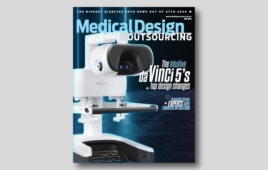
Microrobotic catheter with helical surface in a blood vessel model. [Image courtesy of ETH Zurich/Marco Rosasco Photography]
Led by Brad Nelson, professor in the Multi-Scale Robotics Lab (MSRL) at ETH Zurich, the team hopes to tackle what they believe is the biggest challenge in removing blood clots blocking blood flow to the brain during stroke — the complex structure of the blood vessels.
In the technology developed by this team, the patient lies next to a navigation system that generates a directed magnetic field. The team’s microrobotic catheter features a diameter measuring at less than one millimeter and a soft magnetic tip. This magnetic catheter tip can be steered in all directions using control software. ETH Zurich’s team says this proves easier to control than a manually guided wire.
The team’s work, published in the journal Science Robotics, shows how a magnetically guided microrobot can be steered more efficiently through blood vessels. On the surface of the robot, a helical structure engages with the vessel wall, converting rotation into forward movement. This makes it easier for the treating surgeon to push the catheter through fine and branched vessels.
Working with engineers and neuroradiologists, the research team successfully navigated the microrobot through the blood vessels of a living pig. They took it from an artery, past the heart all the way to the millimeter-sized arteries of the brain.
Nanoflex, a spin-off from ETH Zurich, is further developing the system for commercialization.




